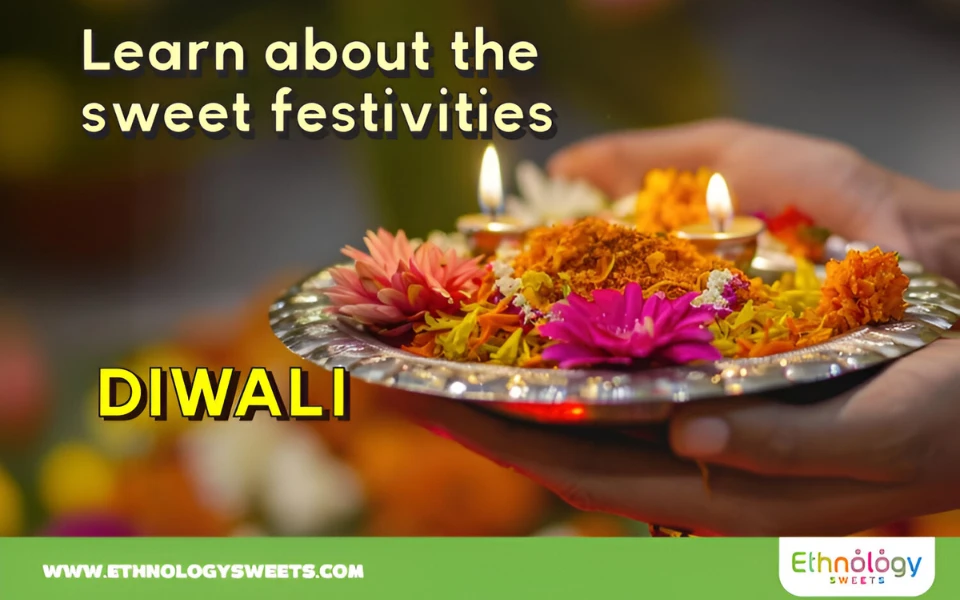Discover Diwali: India’s Festival of Lights and Sweet Traditions
Diwali, also known as Dipawali, is India’s largest and most celebrated holiday, holding a special place in the hearts of millions. This five-day festival, often referred to as the “Festival of Lights,” symbolizes the victory of light over darkness and knowledge over ignorance. Diwali is to Hindus what Christmas is to Christians—a time of deep spiritual connection, joy, and family gatherings.
A Light in the Darkness
The word “Diwali” originates from the Sanskrit term “avali,” meaning a row, and “deepa,” meaning clay lamps. These rows of lamps, which families traditionally light outside their homes, signify the inner light that protects against spiritual darkness. Celebrations may vary across India, but the spirit of Diwali remains the same everywhere—a joyous acknowledgment of good over evil, light over darkness.
Diwali Traditions Across India
Diwali is celebrated in different ways throughout India, each region infusing unique cultural touches into the festival:
Northern India: The northern regions celebrate the triumphant return of King Rama to Ayodhya after defeating the demon king Ravana. Homes are adorned with rows of glowing clay lamps to honor his victory.
Southern India: In the south, Diwali commemorates Lord Krishna’s triumph over the demon Narakasura, symbolizing the defeat of evil forces.
Western India: Western India marks Diwali as the day when Lord Vishnu, the Preserver, sent the demon King Bali to rule the netherworld, representing the victory of good over evil.
The Five Festive Days of Diwali
The excitement of Diwali unfolds over five days, each with its unique customs and rituals. Here’s a look at the traditions that make this festival unforgettable:
Day One – Preparing for Prosperity
Families begin by cleaning and organizing their homes, a ritual believed to invite prosperity. Many also purchase gold or kitchen utensils, symbolizing good fortune for the year to come.
Day Two – Decorating with Light and Color
Homes are decorated with rows of clay lamps and intricate rangoli patterns on the floor. Created with colored powders or sand, these designs welcome good luck and brighten up the surroundings with vibrant colors.
Day Three – The Main Day of Diwali
On the most important day of Diwali, families gather for the Lakshmi Puja, a prayer to Goddess Lakshmi for blessings of wealth and prosperity. Following the puja, families indulge in elaborate feasts and exchange traditional sweets, while fireworks light up the night sky.
Day Four – New Beginnings
This day marks the start of the new year in parts of India, and families celebrate by exchanging gifts and best wishes. It’s a day of joyful visits and heartfelt gratitude.
Day Five – Bond of Siblings
On the final day, brothers visit their married sisters, who welcome them with affection, a lavish meal, and a variety of traditional sweets, reinforcing family bonds.
Sweet Traditions of Diwali
Sweets, or “mithai,” play a significant role in Diwali celebrations. Traditional Indian sweets like laddoos, barfis, and gulab jamuns are exchanged among friends, families, and neighbors as symbols of goodwill and sweetness. Each bite represents the shared joy and togetherness that Diwali brings.
At Ethnology, we understand the importance of celebrating cultural traditions, and we are proud to offer a selection of traditional sweets that bring a taste of Diwali to you, wherever you are. Explore our collection and find the perfect treat to share with loved ones or to enjoy as part of your Diwali festivities.
Celebrate Diwali with Ethnology!
Embrace the light, the traditions, and, of course, the sweets this Diwali! Whether you’re reconnecting with your heritage or experiencing Diwali for the first time, Ethnology brings the flavors of this beautiful festival to your home.




